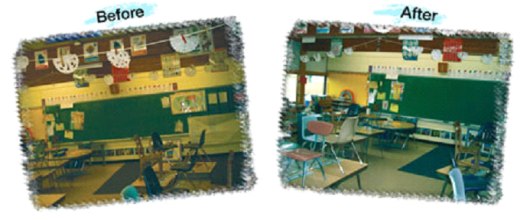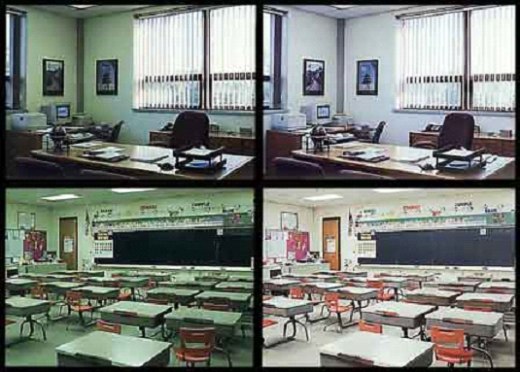Lighting in the class: Is it important?
Yuri León Peceros, Perú
Yury León Peceros is an English teacher at the Language Centre in the Humanities and Art Faculty in San Marcos University, Lima, Perú. He has got a Bachelor's Degree in Education He is planning to get a higher degree and in the meantime has been developing his own teaching materials.
E-mail: yurileo21@yahoo.es
" Let there be light " ( Genesis )
Menu
Introduction
Some ideas
Further reading>
There are many things that one uses to improve the learning atmosphere (e.g. posters on the wall, good ventilation, billboards, etc ) all of these elements create a comfortable space for the students. But picture this situation, one day you go into classroom everything apparently seems normal, one little thing only, it is a little dark, you turn on the lights and Oh! surprise ! there is not light, you try again and again but it is useless, even the emergency equipment does not seem to be working properly. You are a proactive teacher and decides to use some candles. Then you move on with your lesson. But when you reflect was it a normal class? Did you and your students feel the same ? Which made it different ? The answer is light, lighting in the classroom is much more important than we normally think.
Researcher D.B Harmon, Ph. D. (1991) in a study of 160, 000 school age children determined that lighting was a major contributor to student health and learning. Then, should classrooms with effective fluorescent lights make it better ? Lighting is a very important feature in a classroom but you should know that fluorescent lights ( FL ) can cause bodily stress, hyper-activity, attention problems and other distress that leads to poor learning performance. They can be a cause of depression and even tooth decay.
In contrast, according to a Canadian report found that natural light produces health and performance benefits, including higher attendance rates and ad even better dental hygiene. Proponents of sunlight in the classroom ( not sunburn ) say light gives students more energy, and they don't feel boxed-in or trapped.

"But then shouldn't we use FL ? My class and my mind are going to be really clear then." If you can not use natural light and your classroom is currently using FL, you can try to change them, using artificial natural light that is full-spectrum lights ( electric light sources that simulate the visible and ultraviolet (UV) spectrum of natural light ).
" An analysis by the Heschong Mahone Group studied elementary school students in districts from three different states: California, Washington, and Colorado. Although each district had different curriculums, building designs, and climates, students were found to perform significantly better on standardized tests in classrooms where windows and skylights let more daylight in the classroom. In the California district, where test data was available for comparing scores from the beginning and end of the school year, it was shown that, after controlling for a variety demographic and educational variables, students in the most daylit classrooms improved 20 percent in math and 26 percent in reading than the students in classrooms with the least daylight." ( Lightfair international seminar preview ). In another study, several children labelled as learning disabled overcame their problems within one month of changing their lighting to full-spectrum.

In short, the presence of daylight, in any form, (natural or artificial) is associated with improved student academic performance. So we should provide the most suitable lighting in our classroom which enable students to feel more comfortable and let them focus better in the learning process.
- A report which addresses questions about full-spectrum light sources:
What are full-spectrum light sources?
How valid are the claimed benefits?
Are these products worth the extra cost?
This report also proposes a convenient definition for full-spectrum light sources that can be used to quantify the extent to which a given light source deviates from a full-spectrum light source.
www.lrc.rpi.edu/programs/nlpip/lightingAnswers/fullSpectrum/abstract.asp
Eric Jensen, 1995, Brain-Based Learning, The brain store, San Diego, CA USA , pg. 60-61.
- A report about light and learning environment.
www.designshare.com/Research/Lighting/LightingEnvr1.htm
- A CNN article about light and learning
www.cnn.com/TECH/9606/06/daylight.school
- Phrases, sayings and idioms
www.phrases.org.uk/meanings/227650.html

Please check the Dealing with Difficult Learners course at Pilgrims website.
Please check the Expert Teacher course at Pilgrims website.


|